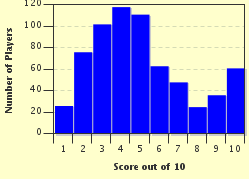Quiz Answer Key and Fun Facts
1. Let's start with a simple signal which, while not used in every jurisdiction, has the same meaning everywhere it is used: a flashing red light. Which traffic sign is this light equivalent to?
2. Here's a mostly European one: Before going from red to green, some European countries display red and amber simultaneously for one to two seconds. Which common feature of European cars is this aspect catering to?
3. Red, amber, green and... blue? Indeed, some cities in Germany added a blue aspect to their traffic lights in the 1980s. The blue light also showed a white key, but what did it mean?
4. Staying in Germany's history for a moment: In East Germany, traffic lights not only showed the red, red-amber, amber and green aspects but were capable of a fifth one, meaning the same as a flashing green in some other countries. What additional light combination did they use?
5. In European countries, most pedestrian lights use pictograms of a red standing man and a green walking one. Germany has a particularly wide selection of these: The original West German one, a new stick figure, the nostalgic East German "Ampelmännchen" and a fourth, officially not permitted but increasingly common version depicting what?
6. Off to Canada! Some Canadian intersections have the overhead lights mounted horizontally instead of vertically. Since this takes away positional information important for color-blind people, these lights often employ shapes to convey their aspect to them. Which is the correct assignment of shapes to colors?
7. Not every vehicle needs to heed the normal lights. In particular, trams and buses often have their own set of lights, usually composed of white and/or orange shapes. While these lights differ in detail from one city to the next, some signals are universal, especially the white bars. Which of these four bars conveys a very different meaning than the other three?
8. An amber flashing light always has a "caution" meaning. Which of the following meanings for "flashing amber" is NOT an actual meaning used in at least one European country?
9. In some places, notably in Switzerland, you will find intersections where the default setting of traffic lights is to have all directions show red lights, both for vehicular and pedestrian traffic. Which type of intersection would be most suitable for such a setting?
10. Finally - like every item of technology, traffic lights can malfunction, with possibly disastrous consequences. Which of these malfunctions does not need special circuitry to detect it and, if found, immediately switch the lights into a safe failure mode (e.g. 4-way flashing red or off)?
Source: Author
WesleyCrusher
This quiz was reviewed by FunTrivia editor
trident before going online.
Any errors found in FunTrivia content are routinely corrected through our feedback system.

